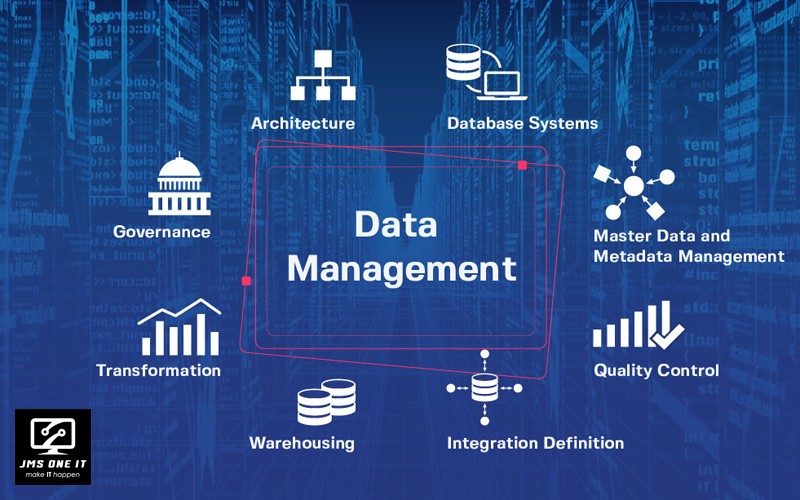Data management services are a collection of tools, processes, and technologies designed to ensure that an organization's data is properly collected, stored, organized, protected, and utilized effectively. In essence, it is about making sure your data is valuable and accessible for making informed decisions.
Here's a breakdown of key aspects of our data management services:
1. Data Collection and Ingestion:
Data Sources: Identifying and connecting to various sources of data, including databases, applications, sensors, social media, and more.
Data Integration: Combining data from different sources into a unified format, ensuring consistency and accuracy.
Data Transformation: Converting raw data into a usable format, cleaning it, and applying necessary transformations.
2. Data Storage and Organization:
Data Warehousing: Storing large volumes of data for analysis and reporting.
Data Lakes: Storing raw, unstructured data in its native format for future analysis.
Data Modeling and Schema Design: Organizing data into logical structures, defining relationships between data elements, and ensuring consistency.
3. Data Governance and Security:
Data Access Control: Defining who can access what data and under what conditions, ensuring confidentiality and integrity.
Data Security: Implementing measures to protect data from unauthorized access, corruption, and loss, including encryption, authentication, and access control.
Data Compliance: Adhering to relevant regulations and standards, such as GDPR, HIPAA, and PCI DSS, to ensure data privacy and security.
4. Data Quality and Integrity:
Data Cleansing and Validation: Identifying and correcting errors, inconsistencies, and duplicates in the data.
Data Enrichment: Adding relevant information to existing data to improve its value and completeness.
Data Standardization: Ensuring data follows consistent formats and definitions across the organization.
5. Data Analytics and Reporting:
Data Visualization: Creating interactive dashboards and reports to present data insights in a meaningful and understandable way.
Business Intelligence (BI): Analyzing data to identify trends, patterns, and anomalies to support business decision-making.
Predictive Analytics: Using statistical models to predict future outcomes based on historical data.
6. Data Backup and Recovery:
Data Backup: Regularly creating copies of data to protect against data loss due to hardware failures, cyberattacks, or other disasters.
Disaster Recovery: Having plans and processes in place to restore data and systems in the event of an outage or disaster.
7. Data Management Tools and Technologies:
Data Management Platforms (DMP): Software solutions that provide a comprehensive suite of tools for data collection, storage, governance, and analysis.
Data Warehousing Tools: Software for managing and analyzing large volumes of data.
Data Visualization Tools: Software for creating interactive dashboards and reports.
Data Security Tools: Software for protecting data against unauthorized access, corruption, and loss.
Key Benefits of Effective Data Management Services:
Improved Decision-Making: Data-driven insights lead to better decisions, reducing risks and increasing business performance.
Enhanced Efficiency: Streamlined data processes improve productivity and reduce operational costs.
Increased Revenue and Profitability: Data-driven strategies help identify new opportunities, optimize operations, and increase revenue.
Improved Customer Experience: Data insights enable personalized experiences, better customer service, and increased customer satisfaction.
Enhanced Compliance: Ensuring data security and privacy compliance reduces risks and protects the organization from penalties.
By implementing robust data management services, organizations can unlock the true potential of their data, gain a competitive advantage, and drive sustainable growth.

